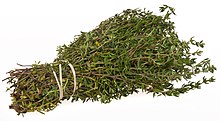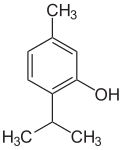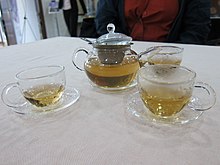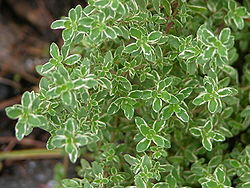Cantore Arithmetic is able to say that time is on the Table: Settings! The herb coins as the words to works Ashes to Ashes Dust to Dust must include Lot’s wife: Salt. Greece must increase as pillars are not salt as format is remaining as Lot’s wife wipes casting the first stone! Microsoft Word equated Jesus’s Setting: Now, it’s gods plate!
You searched for
"PLATE" in the KJV Bible
3 Instances - Page 1 of 1 - Sort by Book Order - Feedback
- Exodus 28:36chapter context similar meaning copy save
- And thou shalt make a plate of pure gold, and grave upon it, like the engravings of a signet, HOLINESS TO THE LORD.
- Exodus 39:30chapter context similar meaning copy save
- And they made the plate of the holy crown of pure gold, and wrote upon it a writing, like to the engravings of a signet, HOLINESS TO THE LORD.
- Leviticus 8:9chapter context similar meaning copy save
- And he put the mitre upon his head; also upon the mitre, even upon his forefront, did he put the golden plate, the holy crown; as the LORD commanded Moses.
Luke 17:32
“Remember Lot's wife.”
King James Version (KJV)
Genesis 19:26
“But his wife looked back from behind him, and she became a pillar of salt.”
King James Version (KJV)
You searched for
"SETTINGS" in the KJV Bible
1 Instances - Page 1 of 1 - Sort by Book Order - Feedback
- Exodus 28:17chapter context similar meaning copy save
- And thou shalt set in it settings of stones, even four rows of stones: the first row shall be a sardius, a topaz, and a carbuncle: this shall be the first row.
Bible Verses About Herbs
Bible verses related to Herbs from the King James Version (KJV) by Relevance
Genesis 1:29 - And God said, Behold, I have given you every herb bearing seed, which is upon the face of all the earth, and every tree, in the which is the fruit of a tree yielding seed; to you it shall be for meat.
Proverbs 15:17 - Better is a dinner of herbs where love is, than a stalled ox and hatred therewith.
Genesis 9:3 - Every moving thing that liveth shall be meat for you; even as the green herb have I given you all things.
Genesis 1:30 - And to every beast of the earth, and to every fowl of the air, and to every thing that creepeth upon the earth, wherein there is life, I have given every green herb for meat: and it was so.
Numbers 9:11 - The fourteenth day of the second month at even they shall keep it, and eat it with unleavened bread and bitter herbs.
John 19:29-30 - Now there was set a vessel full of vinegar: and they filled a spunge with vinegar, and put it upon hyssop, and put it to his mouth. (Read More...)
Genesis 1:29-31 - And God said, Behold, I have given you every herb bearing seed, which is upon the face of all the earth, and every tree, in the which is the fruit of a tree yielding seed; to you it shall be for meat. (Read More...)
Psalms 51:7 - Purge me with hyssop, and I shall be clean: wash me, and I shall be whiter than snow.
Exodus 12:8 - And they shall eat the flesh in that night, roast with fire, and unleavened bread; and with bitter herbs they shall eat it.
Exodus 12:22 - And ye shall take a bunch of hyssop, and dip it in the blood that is in the bason, and strike the lintel and the two side posts with the blood that is in the bason; and none of you shall go out at the door of his house until the morning.Topics and verses are auto-generated from user searches. If a verse or topic does not belong, please contact us. Some scripture references/categories courtesy of Open Bible .info under CC BY 3.0
Thyme
 A bundle of thyme | |||||||
| 101 kcal (423 kJ) | |||||||
| |||||||
Thyme (/taɪm/) is the herb (dried aerial parts) of some members of the genus Thymus of aromatic perennial evergreen herbs in the mint family Lamiaceae. Thymes are relatives of the oregano genus Origanum, with both plants being mostly indigenous to the Mediterranean region. Thymes have culinary, medicinal, and ornamental uses, and the species most commonly cultivated and used for culinary purposes is Thymus vulgaris.
History[edit]

Thyme is indigenous to the Mediterranean region.[1] Wild thyme grows in the Levant, where it might have been first cultivated. Ancient Egyptians used thyme for embalming.[2] The ancient Greeks used it in their baths and burnt it as incense in their temples, believing it was a source of courage. The spread of thyme throughout Europe was thought to be due to the Romans, as they used it to purify their rooms and to "give an aromatic flavour to cheese and liqueurs".[3] In the European Middle Ages, the herb was placed beneath pillows to aid sleep and ward off nightmares.[4] In this period, women also often gave knights and warriors gifts that included thyme leaves, as it was believed to bring courage to the bearer. Thyme was also used as incense and placed on coffins during funerals, as it was supposed to assure passage into the next life.[5]
The name of the genus of fish Thymallus, first given to the grayling (T. thymallus, described in the 1758 edition of Systema Naturae by Swedish zoologist Carl Linnaeus), originates from the faint smell of thyme that emanates from the flesh.[6]
Cultivation[edit]
Thyme is best cultivated in a hot, sunny location with well-drained soil. It is generally planted in the spring, and thereafter grows as a perennial. It can be propagated by seed, cuttings, or dividing rooted sections of the plant. It tolerates drought well.[7] The plant can take deep freezes and is found growing wild on mountain highlands. It grows well on dry slopes and is propagated by cuttings. It can be pruned after flowering to keep from getting woody.[8]
Aroma components[edit]
Gas chromatographic analysis reveals that the most abundant volatile component of thyme leaves is thymol 8.55 mg/g. Other components are carvacrol, linalool, α-terpineol, and 1,8-cineole. Several are also found in basil. Some exhibit antioxidant properties.[9]

Culinary use[edit]
This section needs additional citations for verification. (September 2012) |

In some Levantine countries, the condiment za'atar (Arabic for both thyme and marjoram) contains many of the essential oils found in thyme.[10] Thyme is a common component of the bouquet garni, and of herbes de Provence.[11]
Thyme is sold both fresh and dried. While summer-seasonal, fresh greenhouse thyme is often available year-round. The fresh form is more flavourful but also less convenient; storage life is rarely more than a week. However, the fresh form can last many months if carefully frozen.[12]
Fresh thyme is commonly sold in bunches of sprigs. A sprig is a single stem snipped from the plant.[13] It is composed of a woody stem with paired leaf or flower clusters ("leaves") spaced 15 to 25 millimetres (1⁄2 to 1 inch) apart. A recipe may measure thyme by the bunch (or fraction thereof), or by the sprig, or by the tablespoon or teaspoon. Dried thyme is widely used in Armenia in tisanes (called urc).
Depending on how it is used in a dish, the whole sprig may be used (e.g., in a bouquet garni), or the leaves removed and the stems discarded. Usually, when a recipe mentions a bunch or sprig, it means the whole form; when it mentions spoons, it means the leaves. It is perfectly acceptable to substitute dried for whole thyme.
Leaves may be removed from stems either by scraping with the back of a knife, or by pulling through the fingers or tines of a fork.
Thyme retains its flavour on drying better than many other herbs.[14]
Antimicrobial properties[edit]

Oil of thyme, the essential oil of common thyme (Thymus vulgaris), contains 20–54% thymol.[15] Thyme essential oil also contains a range of additional compounds, such as p-cymene, myrcene, borneol, and linalool.[16]Thymol, an antiseptic, is an active ingredient in various commercially produced mouthwashes, such as Listerine.[17] Before the advent of modern antibiotics, oil of thyme was used to medicate bandages.[3]
Important species and cultivars[edit]

- Thymus citriodorus – various lemon thymes, orange thymes, lime thyme[citation needed]
- Thymus herba-barona (caraway thyme) is used both as a culinary herb and a ground cover, and has a very strong caraway scent due to the chemical carvone.[citation needed]
- Thymus praecox (mother of thyme, wild thyme), is cultivated as an ornamental.
- Thymus pseudolanuginosus (woolly thyme) is not a culinary herb, but is grown as a ground cover.
- Thymus serpyllum (wild thyme, creeping thyme) is an important nectar source plant for honeybees. All thyme species are nectar sources, but wild thyme covers large areas of droughty, rocky soils in southern Europe (both Greece and Malta are especially famous for wild thyme honey) and North Africa, as well as in similar landscapes in the Berkshire and Catskill Mountains of the northeastern US. The lowest growing of the widely used thyme is good for walkways. It is also an important caterpillar food plant for large and common blue butterflies.[18]
- Thymus vulgaris (common thyme, English thyme, summer thyme, winter thyme, French thyme,[19] or garden thyme)[20] is a commonly used culinary herb. It also has medicinal uses. Common thyme is a Mediterranean perennial which is best suited to well-drained soils and full sun.












No comments:
Post a Comment